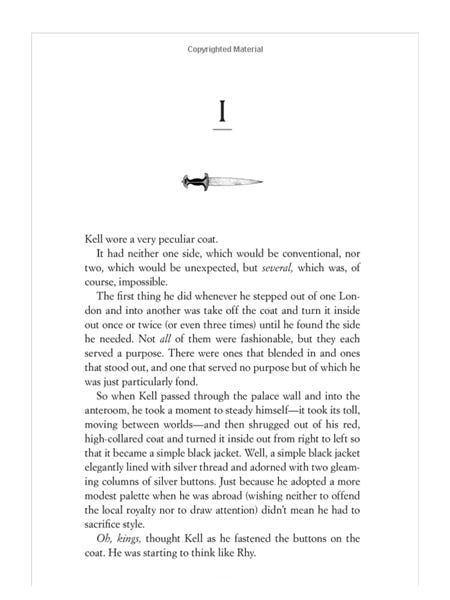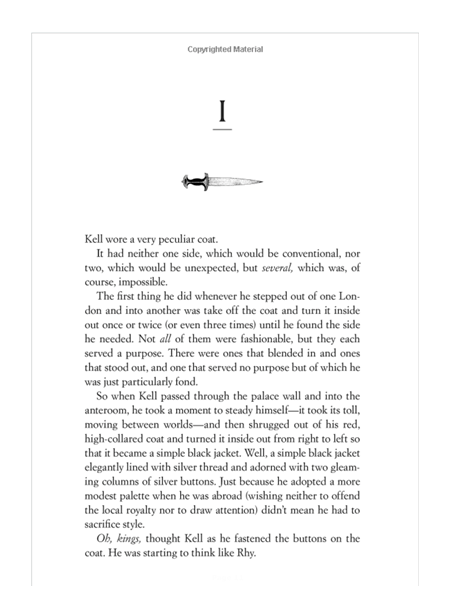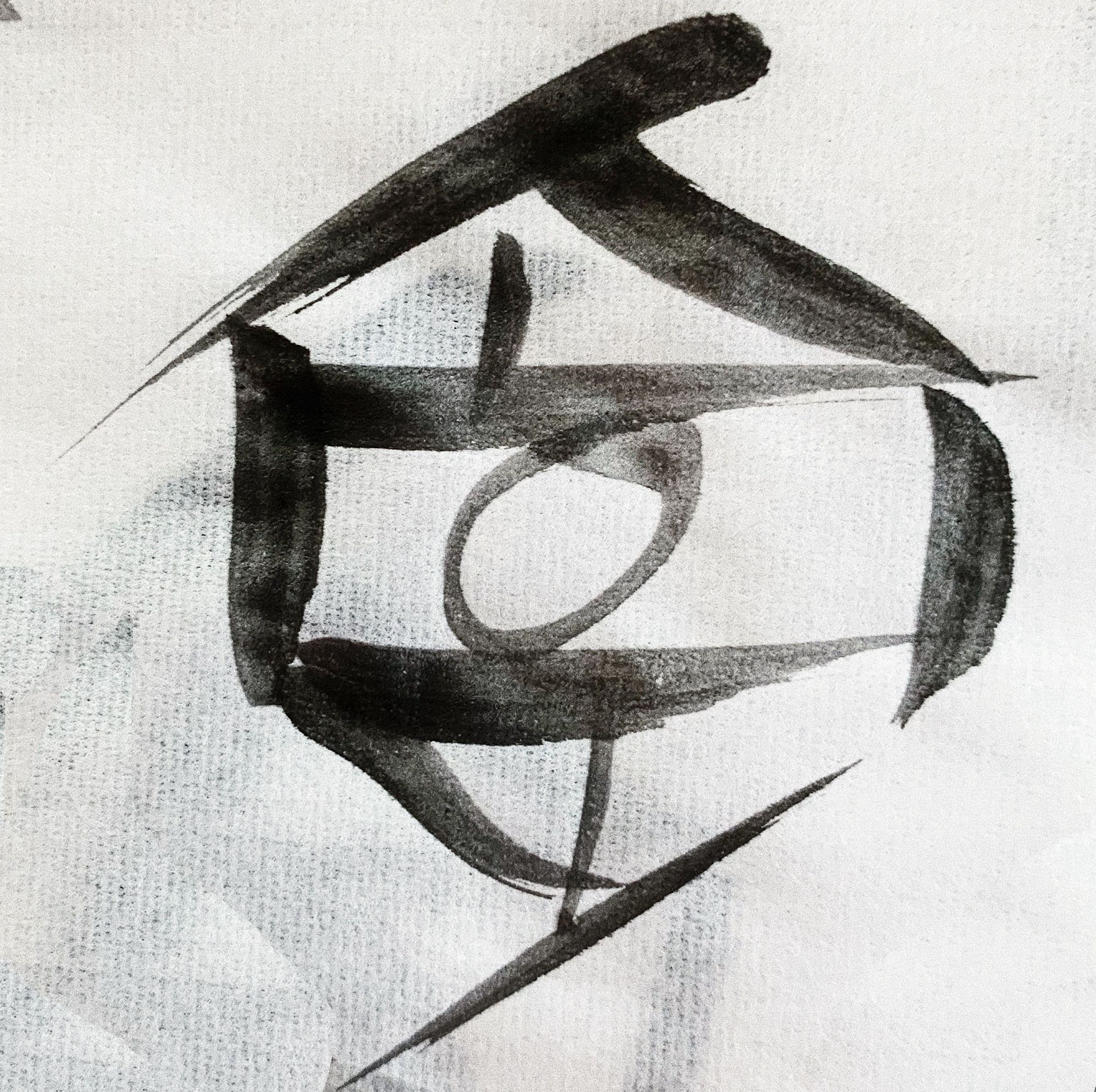Favorite Openings: A Darker Shade of Magic

The last example I want to dig into is V.E. Schwab’s A Darker Shade of Magic. I wanted something very recent and a genre example but even without those constraints, this is one of my favorite first pages. From the first line I found myself mesmerized by this book. These days I rarely have time to read a whole trilogy but this one grabbed me by the collar and I inhaled all three in a row in a glorious sprint through a mad adventure.
Schwab’s skills are on full display in this page. She’s a master of characterization and she knows how to let a moment breathe. There’s a scene I think about whenever I want to talk about fight scenes. It’s a brief moment, two characters ambushed in an alleyway. A quick and dirty knife fight. But, on the page, it stretches out. Schwab takes the time to slow down and show us not only what’s happening, blow by blow, but to give us the time to reflect and see what’s going on in the characters’ heads.
When I talk about how the new referent for fantasy is not The Lord of the Rings but instead anime like Rouruni Kenshin or Dragonball Z, this is what I mean. The slow-down, the internal monologue, the interiority of the character in moments of action. The duel that lasts seven episodes. Seriously, Kenshin wyd, just stab the guy already. *ahem* Anyhow, I love this shift in narrative style and Schwab is one of a number of rising stars across the genre to bring voice to this mode.

This is the first page from A Darker Shade of Magic. There are so many things I love about this opening, but what always stands out to me is the slow confidence of the voice. To start an adventure fantasy novel with the description of a coat sets the stage for so much of how the story will unfold. We learn about Kell, about the world, about how magic works, and about the tonal nature of the book. There will always be a whimsy to the story, even as it gets bloody and dark. There’s a lightness to the characters and a sense that they are defined not only by their power and their violence, but by their tastes and their actions off the battlefield.
And all of that wrapped up in a coat. The coat tells us that there are many Londons before we see the Londons. Schwab lays the groundwork for understanding the multiverse, not with pens on a whiteboard like in every science fiction movie of the last ten years, but through a simple practical example. If you take a coat and turn it inside out it’s different. If you put some blood on the wall and speak a magic word, the whole world turns inside out and it’s different. There are many sides to things, coats and Londons alike.
She uses fashion to give us time period. The type of coat tells us a lot about era and tone. It’s not medieval. It’s not modern. It’s an era where formality matters. Where the military defines aesthetics to some extent. Where royalty rules and flashiness is frowned upon.
And lastly, all of this introduces one of the two core relationships in the book. Kell pauses to reflect on his brother Rhy at the end. We get a sense of exasperation, tension, and profound affection. The tension between Kell’s seriousness and Rhy’s ostentatiousness comes through immediately.
So, world, magic, aesthetics, character, relationships, and plot all in a single page describing a single, peculiar coat.
And all so beautifully written and paced. There’s a musicality to this page, a gentle rhythm to it. I did terribly in those poetry classes that made you map out the beats in pentameter or dactyls or whatever. But without needing to map it out, there’s a power to the rhythm of a sentence. The use of “very peculiar” has a steady, marching beat that draws the reader in.
The use of punctuation in the following: “It had neither one side, which would be conventional, nor two, which would be unexpected, but several, which was, of course, impossible.” The use of those broken out bits of commentary forces the reader to slow down and process what’s being said. By the narrator pausing to reflect and comment the reader is given the space to focus on the actual peculiarity being presented to them. And the way the commas accelerate towards the end of the sentence gives a rushing sense of exasperation, of a confounded narrator, of a sense of delight. It gives a sing-song, fairytale beat for us to begin to understand the nature of this universe and be pulled in to the rest of the page.
I’ve talked a lot about confidence and authority in this series of newsletters. And I think that comes through so clearly here. To start on a peculiar detail. To not throw the reader in in a huge rush, but to deliberately slow us down to a walk to settle in for the exposition to come. To carefully lay out rhyming images and structures for us to begin to understand the magics of this world on a fundamental level. It’s masterful. It feels like Schwab is taking your hand gently but firmly and I, as a reader, feel compelled to trust her.
Openings are opportunities. They are a chance to make an impression. To communicate. To enthrall. But most of all, they’re a chance to convince your reader that you know what you’re doing and you’re on their side. It’s a chance to show you don’t intend to impose, but instead, to invite. It’s a collaboration, a partnership, and you’re meeting them part way.
I’ve talked before about the idea of a story as an act of hospitality. So be hospitable. Be welcoming. And show them a well built house, with firm foundations, and a confident hand to guide them.
